In the reaction with HCl, an alkene reacts in accordance with Markownikoff's rule to give a product 1-chloro-1-methylcyclohexane. The possible alkene is:
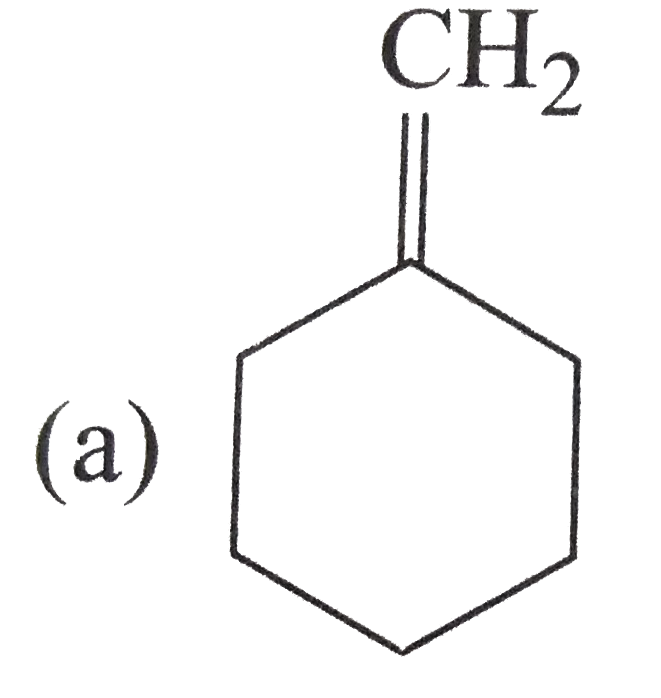
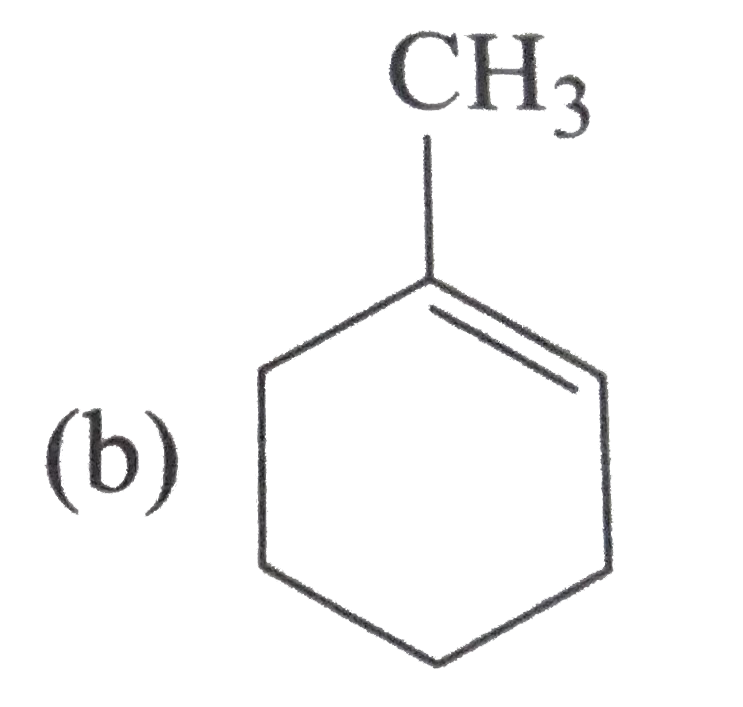
both (A) and (B)
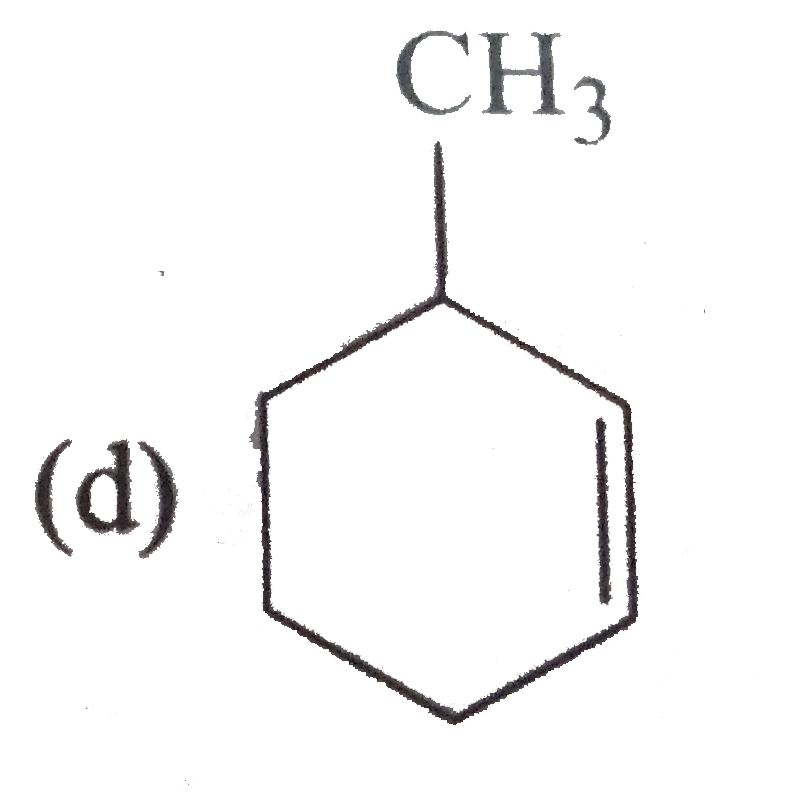
The correct Answer is:C
To determine the possible alkene that reacts with HCl to yield 1-chloro-1-methylcyclohexane according to Markownikoff's rule, we need to analyze the structure of the product and the implications of the rule.
1. Identify the Product Structure:
The product is 1-chloro-1-methylcyclohexane. This indicates that we have a cyclohexane ring with a chlorine (Cl) and a methyl (CH₃) group both attached to the same carbon (the first carbon in the ring).
2. Understand Markownikoff's Rule:
Markownikoff's rule states that in the addition of HX (where X is a halogen) to an alkene, the hydrogen atom (H) will attach to the carbon with the greater number of hydrogen atoms already attached, while the halogen (Cl in this case) will attach to the carbon with fewer hydrogen atoms.
3. Analyze the Possible Alkenes:
We need to find an alkene that, when reacted with HCl, will lead to the formation of the product. The alkene must have a structure that allows for the addition of HCl to yield the desired product.
4. Consider the Structure of Cyclohexane:
Cyclohexane has six carbon atoms in a ring. The presence of a methyl group on one of the carbons indicates that this carbon is already bonded to one additional carbon (the methyl group) and will have fewer hydrogen atoms compared to the adjacent carbon.
5. Determine the Alkene:
- If we consider a possible alkene such as 1-methylcyclohexene, the double bond is between the carbon that has the methyl group and an adjacent carbon.
- When HCl is added, according to Markownikoff's rule, Cl will attach to the carbon of the double bond that has fewer hydrogens (the one with the methyl group), and H will attach to the other carbon, leading to the formation of 1-chloro-1-methylcyclohexane.
6. Verify Other Options:
- Check other potential alkenes (like 3-methylcyclohexene or 2-methylcyclohexene) to see if they can also yield the same product.
- For instance, 3-methylcyclohexene would not yield the desired product because the addition of HCl would not follow Markownikoff's rule correctly to give 1-chloro-1-methylcyclohexane.
7. Conclusion:
The possible alkenes that can react with HCl to yield 1-chloro-1-methylcyclohexane are those that allow for the addition of HCl according to Markownikoff's rule, specifically 1-methylcyclohexene.
Final Answer:
The possible alkene is 1-methylcyclohexene.
The product is 1-chloro-1-methylcyclohexane. This indicates that we have a cyclohexane ring with a chlorine (Cl) and a methyl (CH₃) group both attached to the same carbon (the first carbon in the ring).
Markownikoff's rule states that in the addition of HX (where X is a halogen) to an alkene, the hydrogen atom (H) will attach to the carbon with the greater number of hydrogen atoms already attached, while the halogen (Cl in this case) will attach to the carbon with fewer hydrogen atoms.
We need to find an alkene that, when reacted with HCl, will lead to the formation of the product. The alkene must have a structure that allows for the addition of HCl to yield the desired product.
Cyclohexane has six carbon atoms in a ring. The presence of a methyl group on one of the carbons indicates that this carbon is already bonded to one additional carbon (the methyl group) and will have fewer hydrogen atoms compared to the adjacent carbon.
- If we consider a possible alkene such as 1-methylcyclohexene, the double bond is between the carbon that has the methyl group and an adjacent carbon.
- When HCl is added, according to Markownikoff's rule, Cl will attach to the carbon of the double bond that has fewer hydrogens (the one with the methyl group), and H will attach to the other carbon, leading to the formation of 1-chloro-1-methylcyclohexane.
- Check other potential alkenes (like 3-methylcyclohexene or 2-methylcyclohexene) to see if they can also yield the same product.
- For instance, 3-methylcyclohexene would not yield the desired product because the addition of HCl would not follow Markownikoff's rule correctly to give 1-chloro-1-methylcyclohexane.
The possible alkenes that can react with HCl to yield 1-chloro-1-methylcyclohexane are those that allow for the addition of HCl according to Markownikoff's rule, specifically 1-methylcyclohexene.
The possible alkene is 1-methylcyclohexene.
Topper's Solved these Questions
- BOOK - OP TANDONCHAPTER - UNSATURATED HYDROCARBONSEXERCISE - (LEVEL B) OBJECTIVE QUESTIONS29videos
UNSATURATED HYDROCARBONS
- BOOK - OP TANDONCHAPTER - UNSATURATED HYDROCARBONSEXERCISE - SET II This set contains the questions with more ..23videos
UNSATURATED HYDROCARBONS
- BOOK - OP TANDONCHAPTER - UNSATURATED HYDROCARBONSEXERCISE - BRAIN STORMING PROBLEMS19videos
UNSATURATED HYDROCARBONS
- BOOK - OP TANDONCHAPTER - STOICHIOMETRY (CHEMICAL FORMULAE AND EQUATIONS )EXERCISE - SELF ASSESSMENT11videos
STOICHIOMETRY (CHEMICAL FORMULAE AND EQUATIONS )
Similar Questions
In the reaction with HCl, an alkene reacts in accordance with Markownikoff's rule to give a product 1-chloro-1-methylcyclohexane. The possible alkene is:
View SolutionIn the reaction with HCl, an alkene reacts in accordance with the Markovnikov's rule, to give a product 1-chloro-1- methylcyclohexane. The possible alkene is:
View Solution
Knowledge Check
- Question 1 - Select One
In the reaction with HCl, an alkene reacts in accordance with Markownikoff's rule to give a product 1-chloro-1-methylcyclohexane. The possible alkene is:
A B
B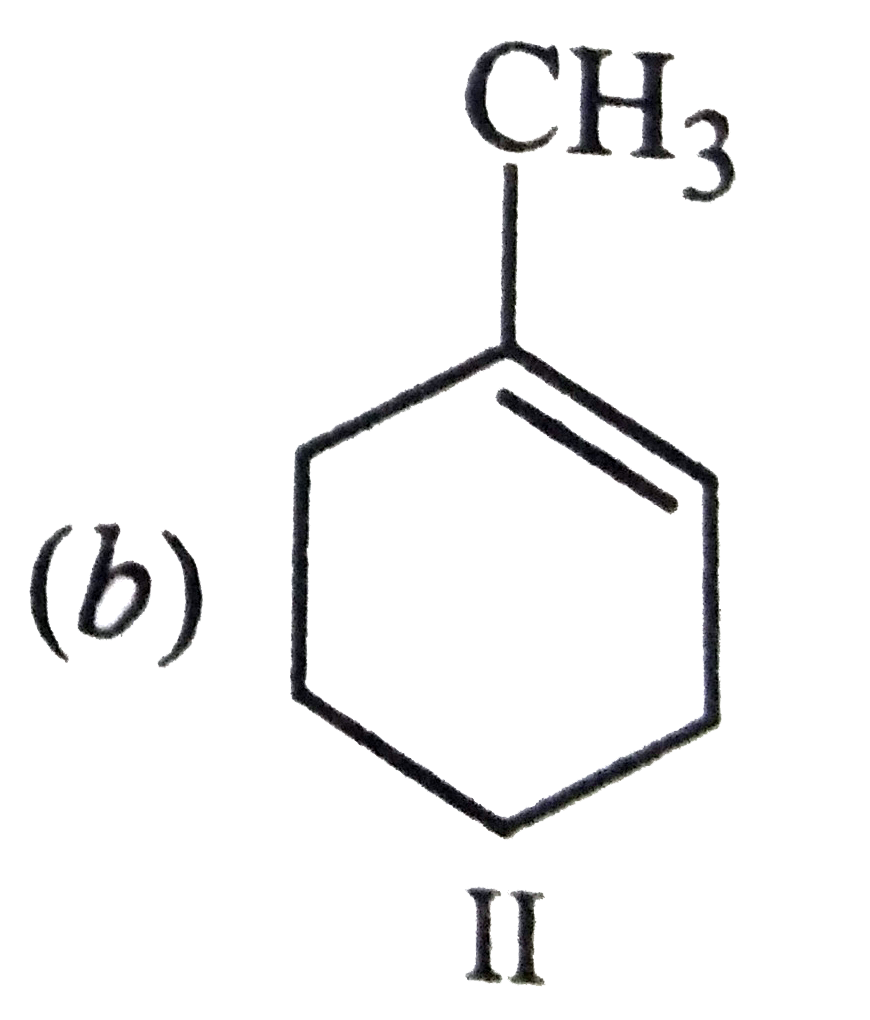 CI+IID
CI+IID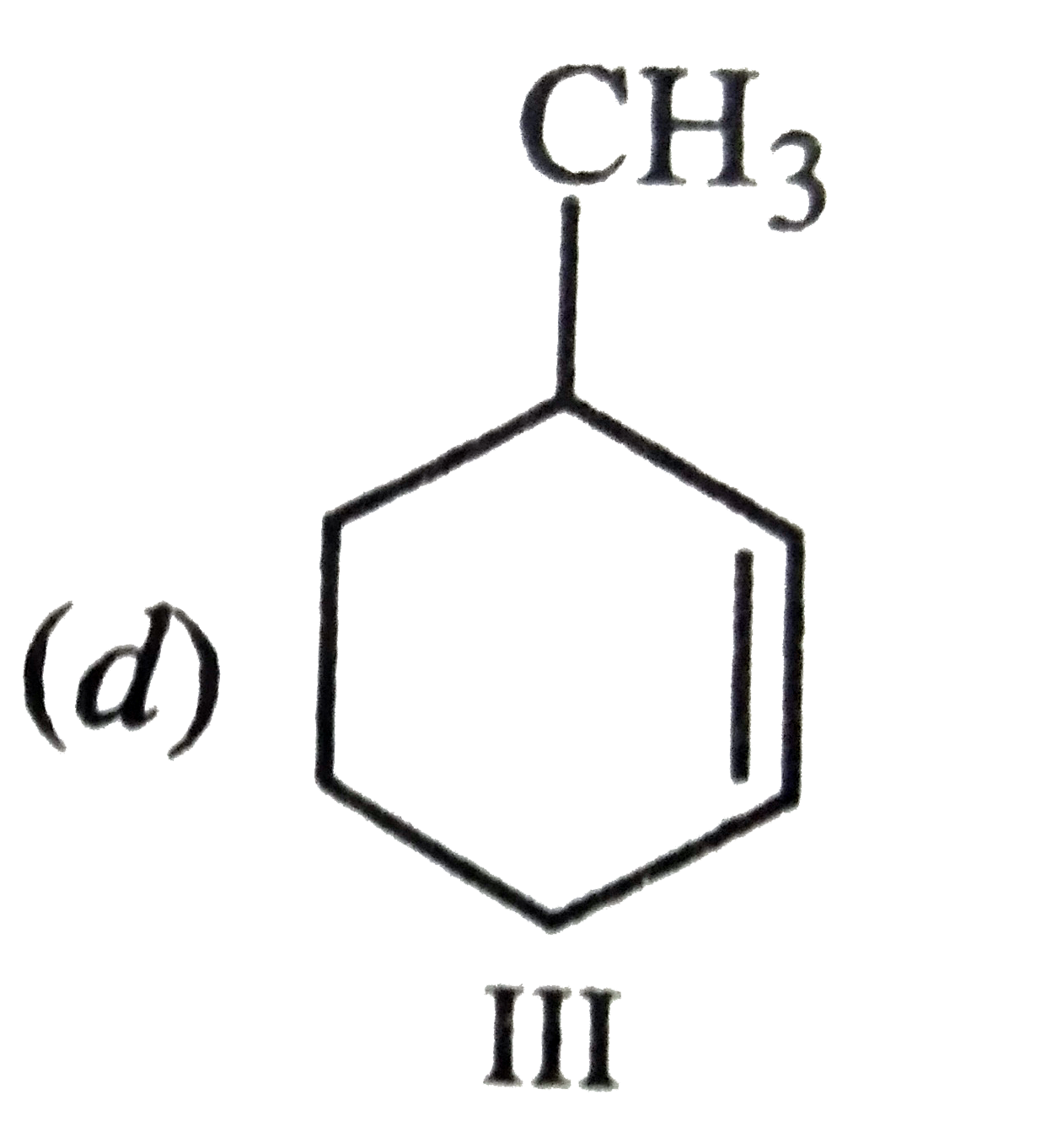
- Question 2 - Select One
In the reaction with HCl, an alkene reacts in accordance with the Markovnikov's rule to give a product 1-chloro-1-methylcychexane. The possible alkene is
A B
B C(A) and (B)D
C(A) and (B)D
- Question 3 - Select One
In the reaction with HCl, an alkene reacts in accordance with Markownikoff's rule to give a product 1-chloro-1-methylcyclohexane. The possible alkene is:
A B
B Cboth (A) and (B)D
Cboth (A) and (B)D
In the reaction with HCl, an alkene reacts in accordance with the markovnikov's rule to give a product 1-chloro-1-methylcyclohexane. The possibel alkene is
View SolutionIn the reaction with HCl, an alkene reacts in accordance with Markownikoff's rule to give a product 1-chloro-1-methylcyclohexane. The possible alkene is:
View SolutionIn the reaction with HCl, an alkene reacts in accordance with the Markovnikov's rule. The possible alkene is
View SolutionIn additon reactions of alkenes, the Markownikoff's rule follow:
View SolutionIn which case the product formed is in accordance of anti Markownikoff's rule?
View Solution

